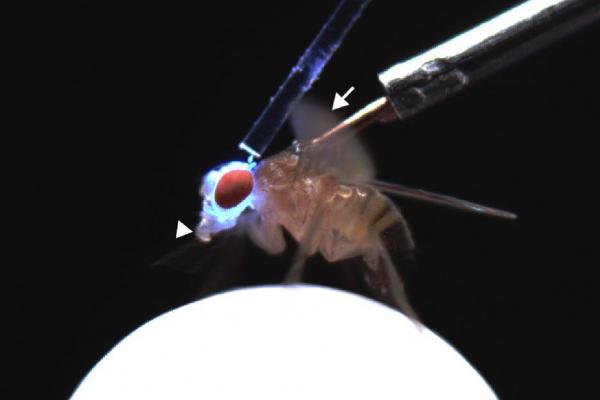
SENDAI, Japan, Feb. 17 (UPI) — The relationship between courtship behavior and socialization in fruit flies may offer a new framework from which to analyze sexual orientation in humans.
Two Tohoku University scientists in Japan recently set out to study the role of vision in fruit fly sexuality. Their experiments helped illuminate links between environment and sexual behavior.
Fruit flies possess a gene linked with homosexuality in humans called fru gene. When the gene is altered in male fruit flies, they ignore female flies and focus their courtship behaviors on males.
“[Fru gene neurons] basically govern the whole aspect of male sexual behavior,” neurogenetics professor Daisuke Yamamoto said in a press release.
To test the role of vision in courtship, Yamamoto and his research partner, postdoctoral fellow Soh Kohatsu, optically stimulated neurons linked with courtship decision-making. They then tempted the fruit flies by moving a flashing white light across a screen — an attempt to mimic a walking female.
Fruit flies with unaltered fru genes courted the spots only after being exposed to pheromones. Males with mutated fru genes courted the dot without brain stimulation or pheromones — but only mutant males which had been raised in a group.
“We found that this kind of visually induced courtship behavior in the fru mutant males was blocked by isolating them right after their emergence from the pupa,” Yamamoto explained.
Yamamoto and Tohoku had assumed homosexual behavior in male fruit flies was solely influenced by genetics. But their latest experiments suggests environmental factors may also play a role.
Researchers say they are reluctant to draw any concrete conclusions about human sexual orientation based on their latest findings — which were detailed this week in the journal Nature.
But Yamamoto says the work serves as a mechanical framework from which to explore human sexuality.
“Our study offers a conceptual basis to explain how nature and nurture interact in shaping human sexual orientation,” he said.






